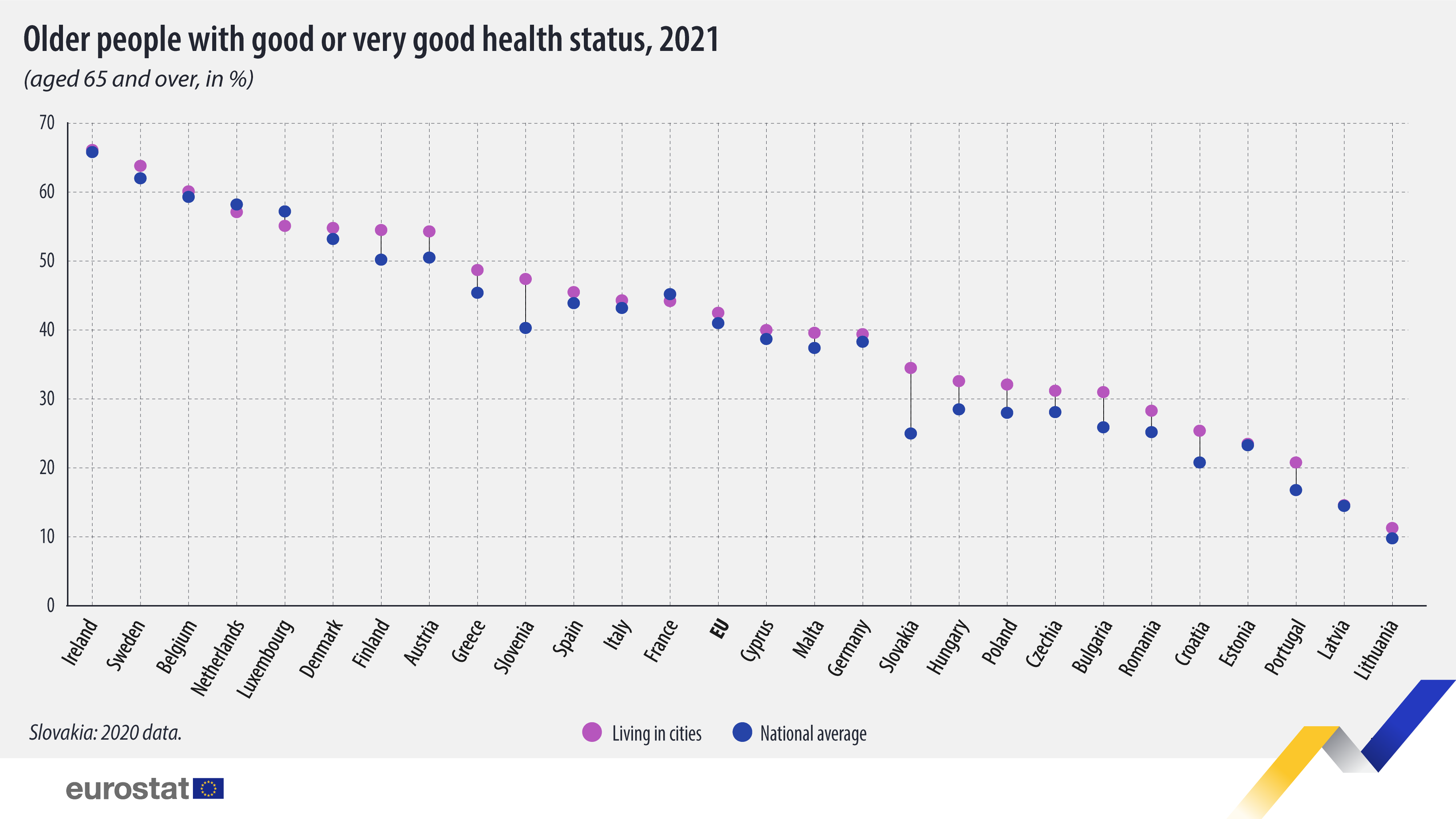Older people report better health status in cities
Social and environmental characteristics of urban areas seem to play an important role in determining the health status of the population.
In 2021, at EU level, 43% of people aged 65 and over living in cities reported that they had a good or very good health status; this was 2 percentage points (pp) higher than the national average for all people of this age group (41%).
Source dataset: hlth_silc_18
Eight EU members reported shares above 50% of people aged 65 and over living in cities with good or very good health status. The highest proportions were recorded in Ireland (66%), Sweden (64%) and Belgium (60%). On the other hand, the lowest proportions were recorded in Lithuania (11%), Latvia (15%) and Portugal (21%).
Among the EU countries, the largest difference in the proportion of older people living in cities reporting good or very good health status compared with the national average was recorded in Slovenia (+7 pp compared with the national average), followed by Bulgaria and Croatia (+5 pp).
In contrast, the difference was lowest in Luxembourg (-2 pp), the Netherlands and France (-1 pp). In these countries, the proportion of people aged 65 and over reporting a good or very good health status was lower in cities than at the national level.
Would you like to know more?
The publications on Rural Europe and Urban Europe feature subnational statistics with different territorial typologies by using intuitive visualisations, innovative data presentations and concise text.
Both publications have six chapters in common on education and training, the labour market, income and living conditions, and digital society and economy. Rural Europe contains another three chapters on demographic developments, women and men, and quality of life, while Urban Europe contains another four on demographic developments, economic activity, quality of life, and cities of equality.
For more information
- The Rural Europe and Urban Europe publications
- Thematic section on regions and cities
- Thematic section on health
- Database on health
Methodological notes:
- Slovakia: 2020 data.
If you have any queries, please visit our contact us page.

